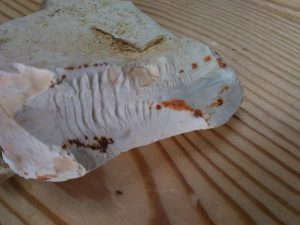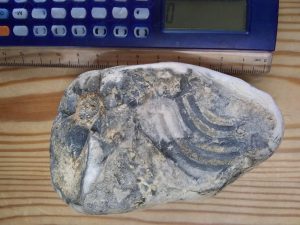Rockwatcher Miriam’s two flint fragment finds are the focus of the latest Fabulous Find feature.
The first fragment, found in Bedford near Pavenham looks rather like fossilised fish scales, but Rockwatch Ambassador Michael has different ideas based on his knowledge of the geology of Bedfordshire.
The area is north of an area called the Chalk Scarp where an abundance of flint is typically formed from chalk, accounting for its lightness in colour. Flint is a form of quartz mineral known as sedimentary crytocrystalline which forms nodules in sedimentary rocks, which when chipped can make sharp edges ideal for tool-making as early Man discovered.
Michael explains how the patterns in Miriam’s first flint specimen are likely to have formed during the Anglian glaciation period – or ice age – as a result of temperature change and stresses caused by the weight of the ice sheet.
The second flint fragment, however, found on Selsey beach in West Sussex is more identifiable as a fossil and Michael explains his thoughts further in the Fabulous Finds section.
Most of the fossils in the Selsey area formed during the Eocene epoch which was around 46 million years ago. Selsey beach is a great place to find fossils in situ in the clay known as the Earnley formation, particularly fossilised marine gastropods and bivalve shells. Fossils are plentiful here – some say that the ratio of fossils to clay is as much as 1:3 – and that’s a lot! You can also spot fossils in the shingle towards the top of the beach including shark and ray teeth, fish and other sea life. If you find a fossil in situ, though, it’s best to leave them where you find them as the area is known as a Site of Specific Scientific Interest (SSSI) which means people need to take care to help preserve the area for future generations to come.
You can read more about Miriam’s flint objects on the Fossils Found by Rockwatchers page.


